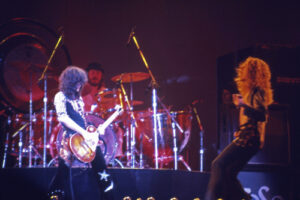
Feature Photo: Arleth Méndez
Returning home is one of the most universal and emotionally charged experiences that people share. It represents a return not only to a physical place but often to an emotional or spiritual state. This journey back can carry a range of emotions—joy, hesitation, uncertainty, or relief. In songs, the idea of returning home is explored through deeply personal lenses, and each artist reflects a different perspective on what it means to return to a place of safety, love, or belonging. While the concept of home may be constant, the reasons for returning and the emotions tied to it are as varied as the artists who sing about it.
In this article, we explore 10 essential songs about returning home, capturing the myriad emotions of this journey. From the hesitant and reflective to the joyful and celebratory, these songs offer a broad view of one of humanity’s most fundamental desires. We’ve chosen a diverse range of artists and musical styles to represent this concept, from the introspective folk-rock of Simon & Garfunkel to the hard rock of Led Zeppelin and the soulful cries of Sam Cooke. These songs, though vastly different in style, all touch on the deeply human experience of returning to where we feel safe, loved, or understood. Through this list, we explore how homecoming is not just a physical journey but often an emotional one, filled with a wide range of feelings, from joy and relief to regret and contemplation.
# 10 – Bring It On Home To Me – Sam Cooke
Recorded on April 26, 1962, at RCA Victor Studio 1 in Hollywood, “Bring It On Home to Me” is one of Sam Cooke’s most enduring and beloved songs. Produced by Hugo & Luigi and featuring an arrangement by René Hall, the track was initially released as the B-side to “Having a Party,” yet it quickly rose to prominence on its own merits. The song is rooted in Cooke’s mastery of blending soul, gospel, and R&B, and it captures a heartfelt plea for reconciliation and forgiveness. Musically, it features Lou Rawls on background vocals, Cliff White on guitar, and Hall’s lush string arrangement. The song was recorded with a live band, giving it a raw yet deeply emotional feel. Cooke’s vocal delivery, which effortlessly transitions between vulnerability and strength, solidifies its place in music history.
Read More: Top 10 Sam Cooke Songs
# 9 – Going Home – The Rolling Stones
“Going Home,” a track recorded by The Rolling Stones in December 1965, stands as a groundbreaking moment in rock music history. Written by Mick Jagger and Keith Richards and recorded at RCA Studios in Hollywood from December 8 to December 10, 1965, this blues-inspired track was revolutionary for its time. Clocking in at over 11 minutes, “Going Home” was not only the longest song the band had ever recorded, but it also marked one of the first times a rock band released an extended improvisation on a studio album. The song was produced by Andrew Loog Oldham and was included as the sixth track on side one of the UK version of Aftermath, while it appeared as the fifth track on side two of the US version of the album.
Read More: Complete List Of The Rolling Stones Albums And Discography
# 8 – Take The Long Way Home – Supertramp
Released in October 1979, “Take the Long Way Home” by Supertramp is a standout track from their critically acclaimed album Breakfast in America. Written by Roger Hodgson, this song was the final one composed for the album during its nine-month recording process at The Village Recorder in Los Angeles, California. The track showcases Supertramp’s signature blend of progressive rock and pop sensibilities, merging introspective lyrics with intricate instrumentation. Produced by the band along with Peter Henderson, “Take the Long Way Home” became the third U.S. single from the album and reached number 10 on the Billboard Hot 100 chart. A live version of the song, recorded in Paris in 1980, also achieved modest chart success in Europe, emphasizing the song’s enduring appeal.
Read More: Complete List Of Supertramp Albums And Discography
# 7 – Night Ride Home – Joni Mitchell
“Night Ride Home,” the title track from Joni Mitchell’s 1991 album, captures the essence of reflective storytelling and stands as one of her most evocative late-career songs. Recorded during her time with Geffen Records, this album was the last of a four-album run with the label. Written and produced by Mitchell, along with co-producer Larry Klein, “Night Ride Home” was inspired by a peaceful moonlit night in Hawaii, which is vividly reflected in its lyrics. The song was originally titled “Fourth of July” and was first performed live in 1988 during promotion for her previous album Chalk Mark in a Rain Storm. The recording took place in Los Angeles, continuing Mitchell’s deep-rooted connection to the California music scene.
Read More: 10 Essential Joni Mitchell Albums
# 6 – All The Way Home – Bruce Springsteen
“All the Way Home” appears on Bruce Springsteen’s Devils & Dust, released in April 2005, an album that marked his return to a more acoustic and introspective style following his earlier works Nebraska and The Ghost of Tom Joad. The song, however, has a unique origin: Springsteen initially wrote it for his long-time friend Southside Johnny, who recorded it for his 1991 album Better Days. Revisiting this track for Devils & Dust, Springsteen reimagined it with a stripped-down yet emotionally resonant arrangement, fitting seamlessly with the rest of the album’s contemplative and intimate atmosphere. The recording took place at Thrill Hill Recording Studios, and the album was produced by Brendan O’Brien. Musicians on the track include Springsteen on guitar and vocals, along with O’Brien contributing bass and other instrumental layers.
Read More: Our Favorite Bruce Springsteen B-Sides
# 5 – Bring It On Home – Led Zeppelin
Led Zeppelin’s “Bring It On Home,” featured on their 1969 album Led Zeppelin II, is a striking blend of blues homage and original rock composition. Initially written by Willie Dixon and recorded by Sonny Boy Williamson II in 1963, the song’s intro and outro pay direct tribute to Williamson’s version, while the middle section transitions into a powerful, original arrangement by Jimmy Page and Robert Plant. The recording of this track took place in New York at Juggy Sound Studio, with additional sessions at Olympic Studios in London, and it was produced by Page, showcasing the band’s expertise in blending traditional blues with their signature hard rock sound. Musically, the track features Robert Plant on vocals, Jimmy Page on guitar, John Paul Jones on bass, and John Bonham on drums.
Read More: 10 Most Underrated Led Zeppelin Songs
# 4 – Mama I’m Coming Home – Ozzy Osbourne
Released in November 1991 as part of Ozzy Osbourne’s sixth studio album, No More Tears, “Mama, I’m Coming Home” is a heartfelt power ballad that marked a significant departure from Osbourne’s heavier metal tracks. The song features Zakk Wylde on guitar, Bob Daisley on bass, and Randy Castillo on drums, with lyrics penned by Motörhead’s Lemmy Kilmister. Produced by Tom Fletcher, the track’s emotional depth and vulnerability, combined with Osbourne’s signature vocal style, resonated with listeners, making it one of his most successful solo singles. Recorded during the No More Tears sessions at A&M Studios in Los Angeles, the song stands as a key track from an album that was critically acclaimed for its blend of heavy metal and introspective balladry.
Read More: Top 10 Ozzy Osbourne Black Sabbath Songs
# 3 – Solsbury Hill – Peter Gabriel
“Solsbury Hill,” the debut solo single by Peter Gabriel, marks a pivotal moment in the artist’s career, both musically and personally. Released in 1977 after Gabriel’s departure from Genesis, the song captures the essence of transformation and the emotional weight of leaving behind the familiar for the unknown. Inspired by a profound spiritual experience on Solsbury Hill in Somerset, England, Gabriel wrote the song as a reflection of his decision to leave Genesis, where he had been the lead vocalist and one of the main creative forces since the band’s formation. The song was recorded in 1976, with Gabriel working alongside producer Bob Ezrin at The Sound Techniques Studio in Chelsea, London. Musicians on the track include Gabriel on vocals and acoustic guitar, Tony Levin on bass, Larry Fast on synthesizer, and Robert Fripp on electric guitar.
Read More: Peter Gabriel’s Best Covers Of Other Artist’s Songs
# 2 – Closer To Home – Grand Funk Railroad
“Closer to Home (I’m Your Captain)” is one of Grand Funk Railroad’s most iconic tracks, featured on their third studio album, Closer to Home, which was released on June 15, 1970, by Capitol Records. The album was recorded at Cleveland Recording Company and produced by Terry Knight, marking another milestone in the band’s rapid rise to prominence. This song became the centerpiece of the album, blending progressive rock elements with bluesy undertones and a strong narrative structure. The album reached RIAA gold status in 1970, solidifying Grand Funk Railroad’s position as one of the dominant American rock bands of the era. The band, consisting of Mark Farner on vocals and guitar, Don Brewer on drums, and Mel Schacher on bass, delivers a powerful performance that helped the album achieve commercial and critical success.
Read More: Grand Funk Railroad’s Best Song On Each Of Their Studio Albums
# 1 – Homeward Bound – Simon & Garfunkel
“Homeward Bound” by Simon & Garfunkel, released as a single on January 19, 1966, through Columbia Records, stands as one of the most enduring folk songs about longing and the deep desire to return home. Written by Paul Simon and produced by Bob Johnston, the song was inspired by Simon’s experiences living and touring in England. Though it’s often said that Simon wrote the song while waiting at Widnes railway station, he clarified in a 2016 interview that it was actually at a station in Warrington where he began composing it. Regardless of the exact location, the song reflects the exhaustion of life on the road and the yearning to be home with loved ones. It was recorded during sessions for their Sounds of Silence album but appeared on their third studio release, Parsley, Sage, Rosemary and Thyme (1966). Musicians on the track include Simon on guitar and vocals, with Art Garfunkel contributing his signature harmonies.
Read More: Top 10 Simon & Garfunkel Songs








































